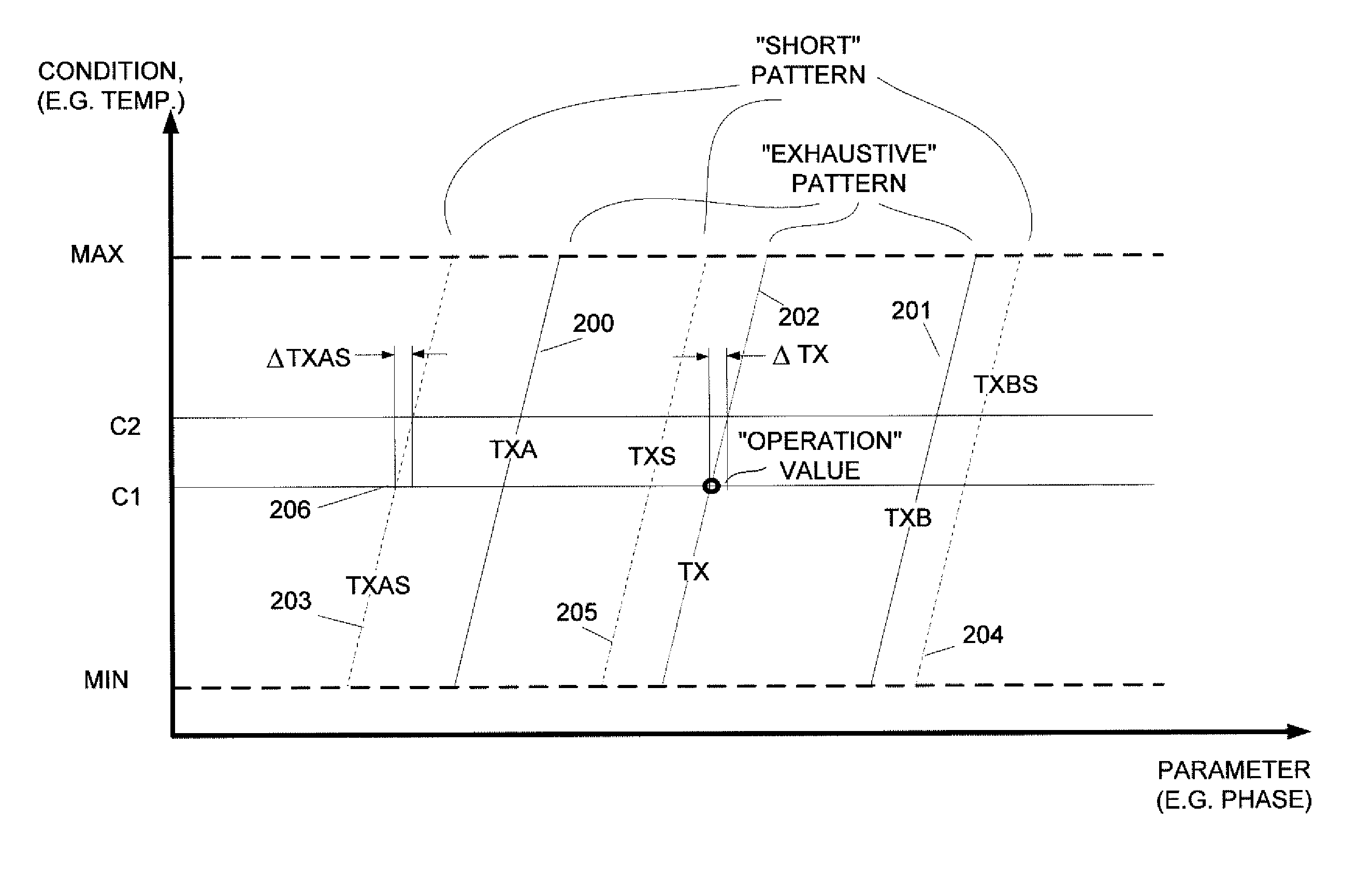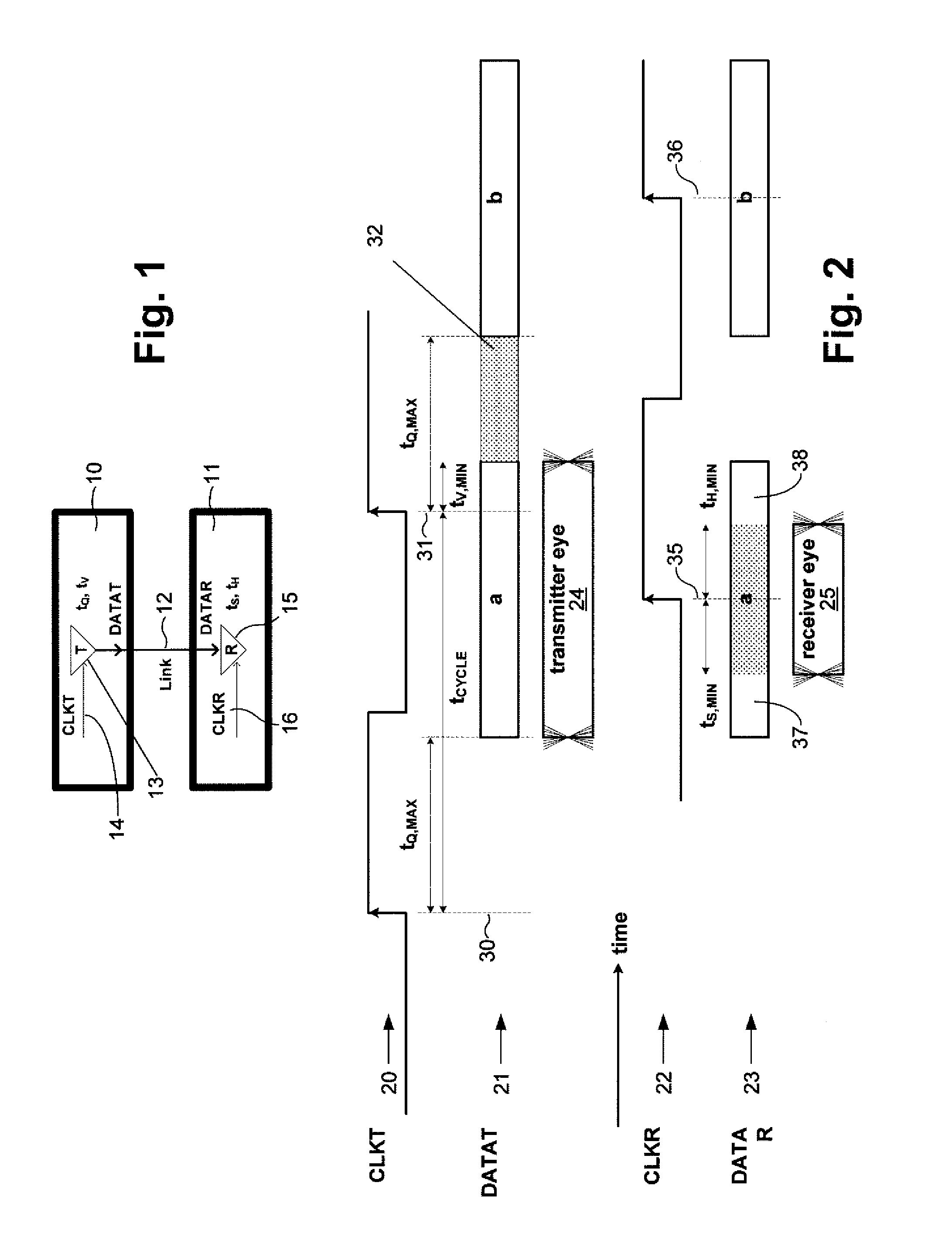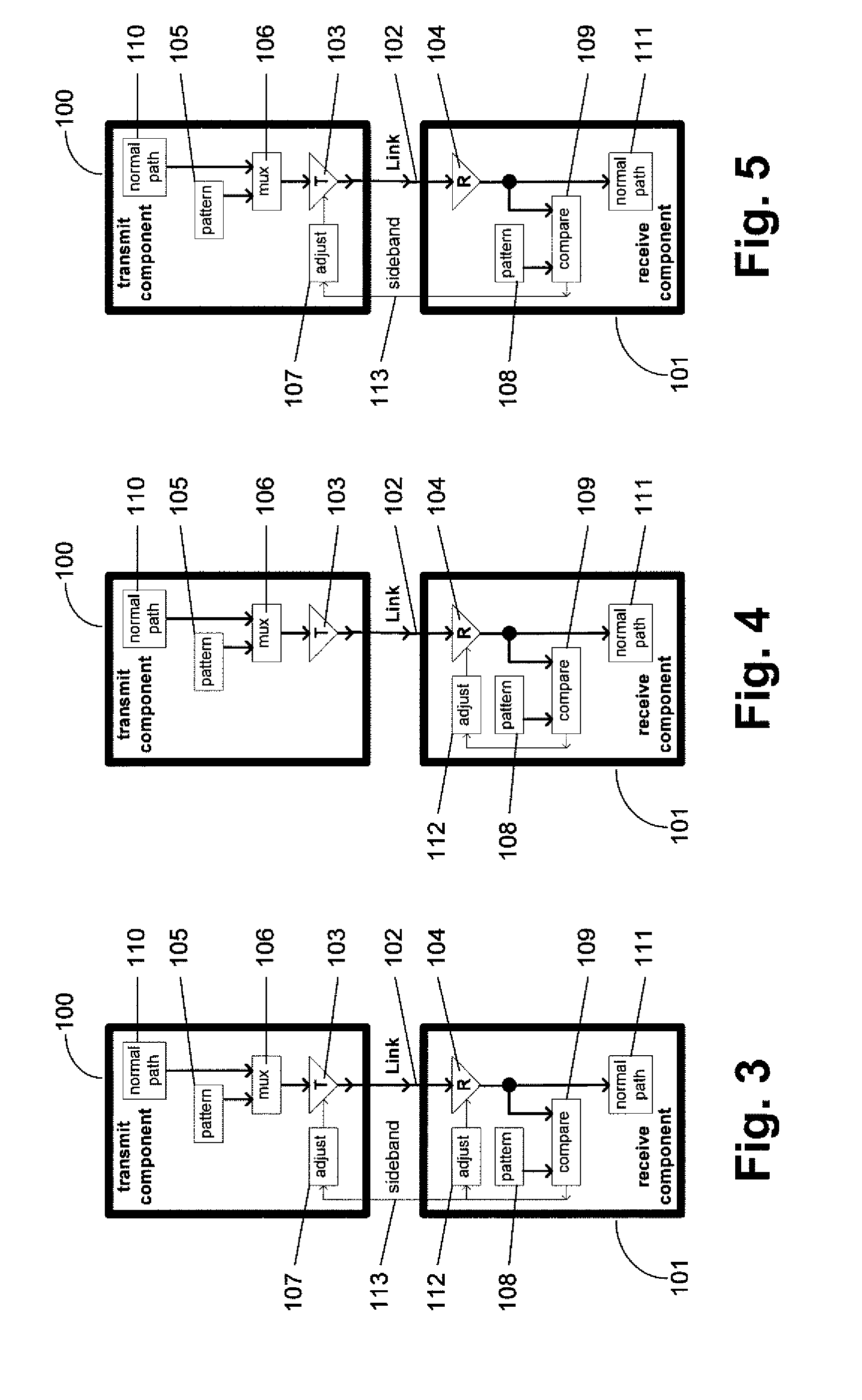Periodic calibration for communication channels by drift tracking
a technology of drift tracking and communication channels, applied in the direction of synchronisation signal speed/phase control, transmission monitoring, receiver monitoring, etc., can solve the problems of system conditions changing, difficult to predict, and long patterns necessary to create worst-case inter-symbol interference or resonan
- Summary
- Abstract
- Description
- Claims
- Application Information
AI Technical Summary
Benefits of technology
Problems solved by technology
Method used
Image
Examples
Embodiment Construction
[0054] A detailed description of embodiments of the present invention is provided with reference to the Figures.
Transmitter and Receiver Timing Parameters
[0055]FIG. 1 shows two components 10, 11 connected with an interconnection medium, referred to as Link 12. One has a transmitter circuit 13 which drives symbols (bits) on Link 12 typically in response to rising-edge timing events on the internal CLKT signal 14. This series of bits forms signal DATAT. The other component 11 has a receiver circuit 15 which samples symbols (bits) on Link 12 typically in response to rising-edge timing events on the internal CLKR signal 16. This series of bits forms signal DATAR. The DATAT and DATAR signals are related; DATAR is an attenuated, time-delayed copy of DATAT. The attenuation and time-delay occur as the signal wavefronts propagate along the interconnection medium of Link 12. The communication channel comprising transmitter 13, link 12 and receiver 15 can be characterized by a plurality of ...
PUM
 Login to View More
Login to View More Abstract
Description
Claims
Application Information
 Login to View More
Login to View More - R&D
- Intellectual Property
- Life Sciences
- Materials
- Tech Scout
- Unparalleled Data Quality
- Higher Quality Content
- 60% Fewer Hallucinations
Browse by: Latest US Patents, China's latest patents, Technical Efficacy Thesaurus, Application Domain, Technology Topic, Popular Technical Reports.
© 2025 PatSnap. All rights reserved.Legal|Privacy policy|Modern Slavery Act Transparency Statement|Sitemap|About US| Contact US: help@patsnap.com



